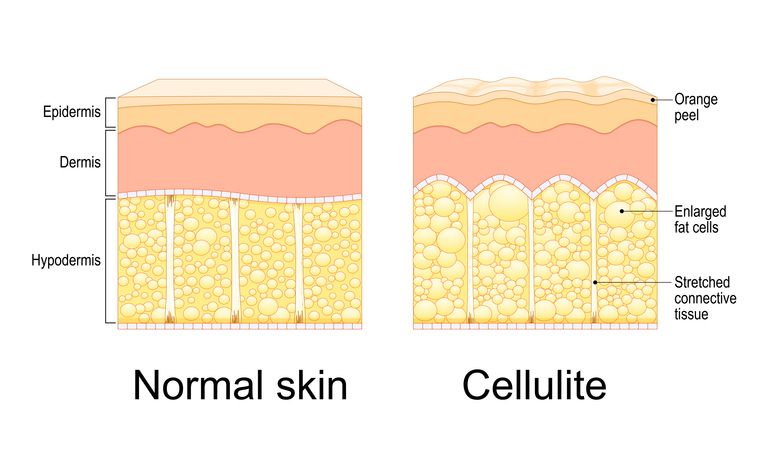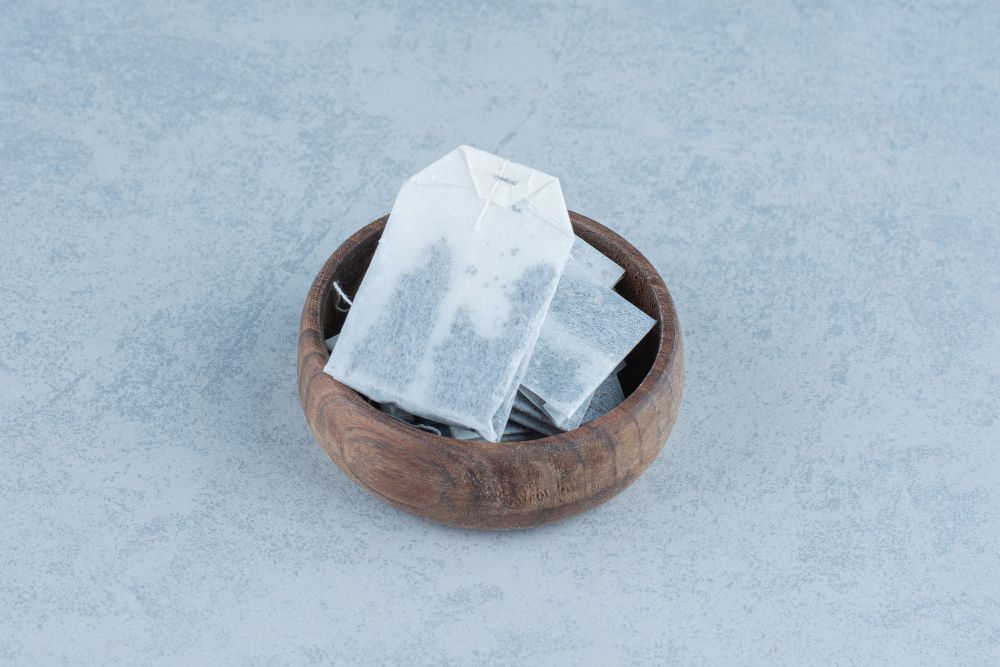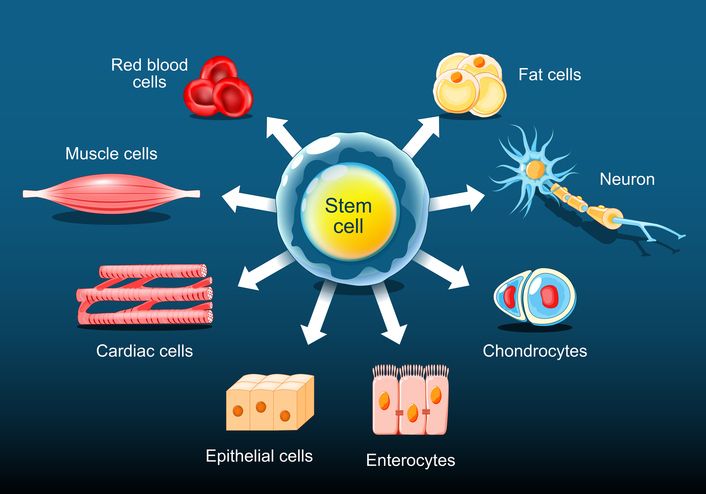Author: Natalie Ng|Updated: 17 June 2025
Waking up to a new pimple, especially one that’s red and swollen, can throw off your whole day. Whether it’s a small spot or something more inflamed, knowing how to shrink acne overnight can make a big difference. Acne often shows up when excess oil, dead skin cells, and bacteria build up in your pores. If you have acne prone skin or sensitive skin, things like hormonal changes, stress, or even your skincare routine can trigger acne breakouts. Some spots go away quickly, while others, like acne vulgaris or more severe acne, tend to stick around longer. In fact, there are simple ways to treat pimples fast without making things worse. Popular ingredients like tea tree oil and salicylic acid, spot treatments with benzoyl peroxide can all help calm skin inflammation and reduce pimples overnight , without damaging the skin’s surface. We’ll go through seven proven methods that work gently but effectively. Keep reading to find the ones that suit your skin best.

What causes pimples to appear overnight?
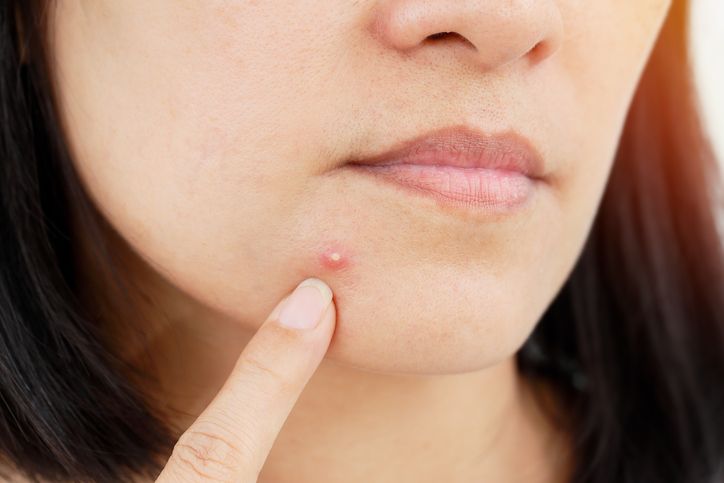
Triggers that lead to sudden acne breakouts
Acne forms when oil glands produce excess oil that mixes with dead skin cells and blocks hair follicles. This creates a perfect environment for acne causing bacteria to grow, which leads to inflamed pimples or clogged pores.
Several common factors can lead to pimples showing up overnight, especially if you have acne prone or sensitive skin.
Possible triggers:
• Hormonal changes: Fluctuations during your cycle or from oral contraceptives can affect oil production.
• Sleeping with makeup on: This traps oil, sweat, and bacteria against the skin’s surface.
• Dirty pillowcases or phone screens: These can transfer bacteria and oil directly onto your skin.
• High sugar or dairy intake: Certain foods may trigger acne in people who are already prone to breakouts.
• Stress and poor sleep: These can increase inflammation and oil gland activity.
Avoiding these triggers can help prevent pimples from forming and support other acne treatments you're using. Even something as simple as switching to clean pillowcases or washing your face before bed can make a difference.

Can ice cubes shrink pimples overnight?
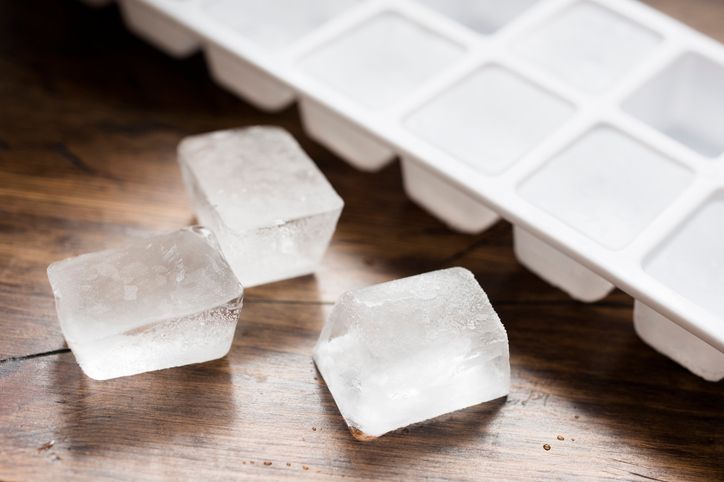
Why ice seems helpful—but doesn’t treat acne effectively
At first, using an ice cube on a pimple can feel like it’s working. The cold numbs the area and may reduce swelling for a few minutes. That’s why some people use it hoping to shrink acne overnight. But the effects are only temporary.
Ice can irritate acne prone or sensitive skin
Ice doesn’t treat the actual causes of acne—like excess oil, clogged pores, or acne causing bacteria. It won’t remove dead skin or help with inflamed pimples for long. Applying ice directly can also damage the skin’s surface or lead to broken capillaries, especially if held on for too long.
If you're dealing with acne breakouts or painful pimples, it's better to use topical treatments with proven ingredients like salicylic acid or benzoyl peroxide. These help reduce inflammation, clear pores, and prevent pimples without harming healthy skin.
Read More
Book Now to Experience
Acne Treatment
1 Minute Self-Registration
Date should not be before minimal date

Hydrocolloid patches reduce pimples overnight without skin damage
Hydrocolloid patches draw out fluid and protect the skin
Hydrocolloid patches help shrink acne overnight by pulling out excess oil, pus, and fluid trapped near the skin’s surface. They act as a barrier, protecting acne prone skin from dirt, bacteria, and touching—which can worsen acne or lead to acne scars. These patches are most effective on whiteheads and surface-level pimples that have already formed and are ready to drain.
They don’t clear clogged pores or remove dead skin cells, and they won’t target acne causing bacteria deeper in the skin. But they help reduce swelling and skin inflammation without irritating sensitive skin. That makes them a safe option for treating pimples fast without adding to skin irritation or redness.
Steps to use hydrocolloid patches correctly
• Clean the area using warm water and a mild cleanser.
• Let the skin dry completely—patches won’t stick to damp or oily skin.
• Apply the patch directly over the pimple and press around the edges to secure it.
• Leave it on overnight. By morning, the patch may turn white from absorbing fluid.
If the pimple is still active, apply a fresh patch and continue for up to 24 hours. These patches don’t replace stronger acne treatments like salicylic acid or topical retinoids, but they’re useful for calming inflamed pimples without harsh ingredients.

Tea tree oil reduces acne causing bacteria and skin inflammation
Tea tree oil targets bacteria and supports healing
Tea tree oil works as a natural antibacterial solution that helps reduce pimples and treat acne without using strong chemical ingredients. It’s often used on acne prone skin because it targets acne causing bacteria directly on the skin’s surface, helping reduce inflammation and shrink inflamed pimples. While it doesn’t work instantly, regular use may help reduce breakouts and support healing over time without damaging healthy skin.
To use it safely, tea tree oil must be diluted before application. The pure oil is highly concentrated and can worsen acne or lead to skin irritation if used incorrectly.
Dilution and patch testing are important
Tea tree oil must be mixed with a carrier oil before touching the skin. Use gentle carrier oils like jojoba oil, almond oil, or coconut oil to reduce the risk of skin irritation.
Dilution guideline:
• Combine 1 drop of tea tree oil with 9–10 drops of carrier oil.
• Mix thoroughly and store in a clean, airtight container.
Before applying the mixture to acne breakouts or inflamed areas, test the blend on your inner arm. Wait 24 hours to check for sensitivity or irritation.
Safe spot treatment method
Once patch tested, apply the diluted mixture directly to blemishes using a clean cotton swab. This approach allows you to treat pimples precisely without spreading oil to unaffected skin.
Application tips:
• Apply once or twice daily on active acne areas only.
• Avoid the delicate areas around the eyes and lips.
• Do not use on broken skin or popped pimples.
While tea tree oil can’t treat deep or severe acne on its own, it’s a useful part of an acne treatment routine—especially for those with sensitive skin looking to avoid over the counter treatments with harsh ingredients.
Book Now to Experience
Acne Treatment
1 Minute Self-Registration
Date should not be before minimal date

Clay masks absorb excess oil and reduce pimples overnight
Clay helps remove buildup from the skin’s surface
Clay masks can reduce pimples overnight by absorbing excess oil and drawing out impurities that clog pores. They help control oil production and calm inflamed pimples without irritating the skin. This makes them useful for acne prone skin, especially when breakouts are caused by oil buildup or blocked hair follicles.
Gentle clays like kaolin, bentonite, and French green clay are safe choices for acne treatments. These options help reduce swelling and remove dead skin without harming the skin barrier. Unlike harsh chemical peels or scrubs, clay masks give your skin a cleaner feel without increasing the risk of skin irritation.
Choosing clay types for acne prone and sensitive skin
Some clays are better suited for certain skin types. Choosing the right one helps treat acne without causing more pimples or skin damage.
Safe clays to use:
• Kaolin clay: mild and non-drying, good for sensitive skin
• Bentonite clay: absorbs oil effectively, ideal for oily or acne prone skin
• French green clay: mineral-rich and gentle, works for combination skin
All clay masks should be patch tested before full use. Always mix the clay with clean, filtered water or rosewater to avoid adding irritation-causing ingredients to your skin.
How to make and apply a clay mask safely
Clay masks are easy to prepare at home using simple ingredients. The mixture should be smooth and easy to spread.
Basic recipe:
• 1 tablespoon of kaolin or bentonite clay
• 2 teaspoons of rose water or filtered water
• Optional: ½ teaspoon of honey or a few drops of chamomile essential oil for calming effect
Apply the clay after cleansing your skin:
Steps for application:
• Clean your face with warm water and a gentle cleanser. Pat dry.
• Using clean fingertips or a soft brush, apply a thin, even layer of clay.
• Keep the mask slightly moist while it sits for 10–15 minutes.
• Rinse with lukewarm water before it starts cracking.
Never leave the mask on overnight. Over-drying can worsen acne or cause more pimples. After rinsing, apply a moisturizer suitable for your skin type to help keep the skin barrier healthy.

Benzoyl peroxide treats pimples fast with targeted spot application
Benzoyl peroxide reduces acne causing bacteria and clears clogged pores
Benzoyl peroxide is one of the most effective topical treatments for reducing acne breakouts. It works by killing acne causing bacteria and helping clear clogged pores filled with dead skin and excess oil. When applied correctly, it can reduce inflammation and flatten inflamed pimples overnight without irritating the surrounding skin.
This ingredient is best used on active breakouts rather than across the entire face, especially if you have sensitive skin. A low concentration is enough to treat acne without causing unnecessary dryness or peeling.
Applying benzoyl peroxide safely to avoid skin irritation
Start with a 2.5% benzoyl peroxide product. Higher strengths are more likely to trigger skin irritation without offering better results.
Application steps:
• Cleanse your face with warm water and pat dry.
• Apply a thin layer of benzoyl peroxide directly to each blemish using a clean cotton swab.
• Let the product dry completely before applying a moisturizer.
Use it once a day at night to reduce pimples fast without over-drying your skin. Avoid using it on large areas unless directed by a healthcare provider, especially if you're also using other active ingredients like topical retinoids or salicylic acid.
To prevent rubbing the treatment off, some people use a small bandage over the area while sleeping. This keeps the medication in place and allows more time for it to work overnight.
Book Now to Experience
Acne Treatment
1 Minute Self-Registration
Date should not be before minimal date

Salicylic acid removes dead skin and clears clogged pores
Salicylic acid gently exfoliates and reduces breakouts
Salicylic acid is a beta-hydroxy acid that helps treat pimples by clearing clogged pores and loosening the buildup of dead skin cells. It penetrates into the pores and breaks down the bonds holding dead skin and oil together, which helps reduce pimples and prevent future acne breakouts.
This makes it especially helpful for blackheads, whiteheads, and small inflamed pimples. Unlike physical scrubs that can irritate the skin or worsen acne, salicylic acid works below the surface without damaging the skin barrier.
Correct use helps avoid skin irritation
A 2% salicylic acid solution is strong enough to treat acne vulgaris and reduce swelling around blemishes without irritating most skin types. Overuse, however, can dry out the skin and trigger more pimples, especially on sensitive skin.
Steps for application:
• Wash your face and pat it dry.
• Apply a small amount of salicylic acid solution to affected areas using your fingertips or a clean cotton pad.
• Leave it on for a few minutes before applying your regular moisturizer.
Start by using it once per day. If your skin tolerates it well, increase to twice daily if needed. Avoid using salicylic acid together with other strong topical treatments like benzoyl peroxide or chemical peels unless directed by a healthcare provider. It works best as part of a regular skincare routine to reduce pimples and maintain clear skin over time.

Chamomile and green tea reduce inflammation and calm acne overnight
Plant-based ingredients soothe inflamed pimples
Chamomile and green tea contain natural anti inflammatory properties that help reduce swelling, redness, and irritation on acne prone skin. These ingredients are rich in antioxidants, which support healing and help prevent pimples from getting worse.
They don’t unclog pores or exfoliate dead skin, but they’re gentle enough to use on sensitive skin, especially during flare-ups or after other acne treatments that may cause skin irritation.
Using chamomile and green tea as spot treatments
These remedies work well when applied directly to inflamed pimples or areas with visible skin inflammation.
Simple method:
• Steep 2–3 chamomile or green tea bags in hot water for 5 minutes.
• Let the liquid cool completely.
• Use a clean cotton pad or swab to apply the liquid to acne breakouts.
For added benefit, store the cooled tea in the refrigerator and apply as needed before bed. You can also freeze the tea in small cubes and gently press one on a painful pimple to reduce swelling.
These natural ingredients won’t replace over the counter treatments like salicylic acid or benzoyl peroxide, but they’re useful for calming skin between stronger acne treatments and for reducing visible redness overnight.
Book Now to Experience
Acne Treatment
1 Minute Self-Registration
Date should not be before minimal date

Azelaic acid reduces swelling and clears acne causing bacteria
Azelaic acid treats multiple acne triggers at once
Azelaic acid is a gentle but effective topical treatment that works on several common acne triggers. It helps clear dead skin cells from the skin’s surface, reduces swelling in inflamed pimples, and lowers the growth of acne causing bacteria inside clogged pores. This makes it especially useful for treating acne vulgaris and helping prevent pimples before they form.
It’s also known for helping with acne scars and uneven tone left behind after breakouts. While results take time with regular use, applying it at night may help reduce redness and improve texture by morning, especially when used on acne prone or sensitive skin.
Safe ways to use azelaic acid at night
Azelaic acid is available in over the counter treatments and prescription formulas. For overnight use, start with a low concentration (typically 10%) unless advised otherwise by a healthcare provider.
Steps for application:
• Wash your face using warm water and a gentle cleanser. Pat dry.
• Apply a thin layer of azelaic acid gel or cream to areas with active pimples or clogged pores.
• Avoid contact with eyes, mouth, and broken skin.
• Let it absorb completely before applying your regular moisturizer.
This treatment is a good option if benzoyl peroxide or salicylic acid causes irritation. It works more slowly than stronger spot treatments but is less likely to worsen acne or damage the skin barrier.

Professional acne treatment to support faster overnight results
In-clinic acne treatments can improve overnight care at home
Home remedies and topical treatments can shrink acne overnight, but for deeper, long-term improvements, professional support can make a big difference. One option for acne prone skin is New Beauty’s Acne Treatment — a non-invasive solution that helps unclog pores, calm inflamed pimples, and reduce future acne breakouts by targeting the root causes directly.
This treatment works well alongside at-home acne treatments like salicylic acid, benzoyl peroxide, and hydrocolloid patches. It doesn’t replace your routine, but it enhances it by removing dead skin cells and excess oil buildup that contribute to clogged pores and inflamed pimples.
How the Acne Treatment works
The treatment starts with dual spiral suction and drainage technology to exfoliate dead skin and clear oil and dirt trapped deep inside pores. This reduces the buildup that often leads to acne breakouts overnight. Once the skin is clean and unclogged, a hydrating serum is applied to balance oil production, support collagen growth, and soothe the skin.
The combination of deep cleansing and hydration makes it easier for the skin to heal, especially after inflamed breakouts. When oil glands are calmer and the skin barrier is healthier, pimples are less likely to return.
Benefits of the Acne Treatment
• Clears clogged pores using vacuum suction to remove debris
• Reduces excess oil, helping prevent pimples before they form
• Calms skin inflammation without harsh chemicals or irritation
• Improves the look of acne scars and enlarged pores over time
• Supports better results from overnight spot treatments
This treatment is especially suitable for people with moderate to severe acne, whiteheads, blackheads, or acne vulgaris. It’s non-invasive, requires no downtime, and works well with acne prone or sensitive skin types.
To improve overnight acne care and help your skin recover faster, adding this in-clinic treatment can make a noticeable difference.
Book the Acne Treatment now to support clear, healthy skin and make your acne treatments work harder overnight.
New Beauty's Acne Treatment
What to avoid before bed to prevent pimples overnight
Nighttime habits that trigger breakouts
The hours before bed can either support healthy skin or quietly worsen acne. For those with acne prone skin, certain nighttime habits can lead to clogged pores, excess oil buildup, or skin irritation — all of which make it more likely to wake up with a new pimple.
Even if you're using the right acne treatments, these small mistakes can cancel out your efforts or even worsen acne without you noticing.
Things to avoid before sleeping:
• Sleeping with makeup on: Leftover product traps oil and dead skin cells on the skin's surface, leading to blocked pores and new breakouts.
• Using heavy or pore-clogging creams: Thick moisturizers or oils that aren't non-comedogenic can block pores and worsen acne overnight.
• Touching your face while sleeping: Resting your hands or arms on your face transfers oil and bacteria, which can trigger acne.
• Unwashed pillowcases or sheets: These collect sweat, oil, and acne causing bacteria over time, which can contribute to skin inflammation.
• Hair products on your pillow: Leave-in conditioners or oils can transfer to your skin, especially near the hairline, and cause breakouts.
Small changes that help prevent pimples
Keeping your evening routine clean and minimal is one of the easiest ways to prevent pimples from developing overnight.
• Always wash your face before bed using warm water and a gentle cleanser.
• Use a light, non-comedogenic moisturizer that suits your skin type.
• Change pillowcases regularly, especially if you have oily skin or long hair.
• Tie your hair back loosely if you use styling products.
These steps support your skin’s overnight recovery and help prevent pimples from forming while you sleep
Book Now to Experience
Acne Treatment
1 Minute Self-Registration
Date should not be before minimal date
FAQ
1. Can I use aloe vera gel to shrink acne overnight?
Yes, aloe vera gel may help reduce swelling and calm inflamed pimples overnight, especially on sensitive skin. It has natural anti inflammatory properties and can soothe skin irritation while supporting moisture balance. While aloe vera doesn’t clear clogged pores or remove acne causing bacteria, it can help reduce redness and discomfort, making it a useful addition to a gentle overnight routine.
2. Does using a warm compress help treat pimples fast?
A warm compress can be helpful for certain types of pimples, especially those that are deep under the skin and painful. Applying gentle heat may help soften the blockage in clogged pores and promote drainage. Use warm (not hot) water and limit application to 10–15 minutes. While it won't shrink all pimples overnight, it can reduce pressure and speed up healing in some cases.
3. Is it safe to use essential oils like lavender or rosemary oil for acne?
Some essential oils have antibacterial properties, but they must always be diluted with a carrier oil before touching the skin. Oils like lavender or rosemary may offer calming effects, but they’re not as well-studied as tea tree oil for treating acne. Using undiluted oils can cause skin irritation or worsen acne, especially on acne prone or sensitive skin. Always do a patch test first.
4. Can tanning beds help dry out acne?
Tanning beds may temporarily dry out oily skin, but they don’t treat acne and can actually worsen acne long term. UV exposure can lead to more dead skin buildup, trigger skin inflammation, and increase the risk of acne scars. Excessive sun exposure can also damage the skin barrier. It’s better to use safe topical treatments that reduce pimples without harming the skin.
5. Will topical retinoids help reduce pimples overnight?
Topical retinoids are effective for reducing acne over time, but they do not provide overnight results. They work by increasing cell turnover and keeping pores clear of dead skin cells and excess oil. While they help prevent pimples and improve skin texture, they often cause mild irritation during the first few weeks of use. For fast spot treatment, ingredients like benzoyl peroxide or salicylic acid are better suited for shrinking a pimple overnight.
Recommended Articles
COPYRIGHT© NEW BEAUTY MANAGEMENT LIMITED 2025. ALL RIGHT RESERVED.

